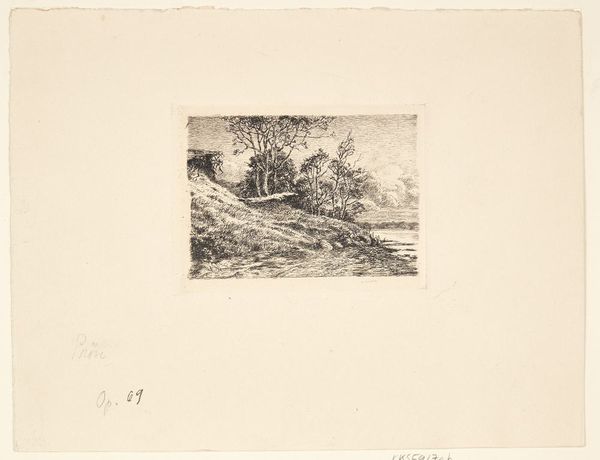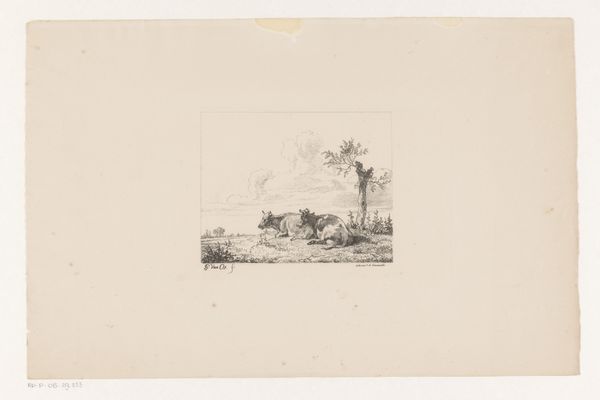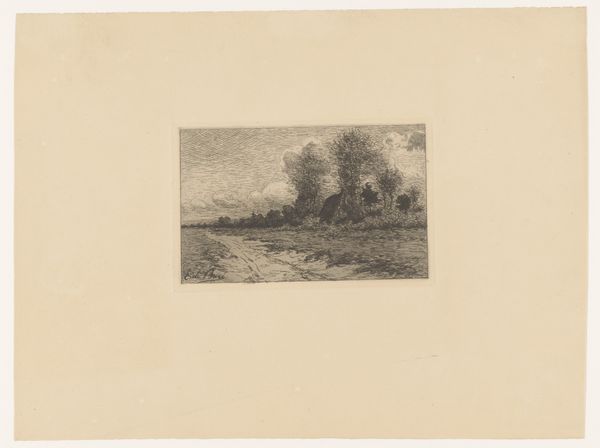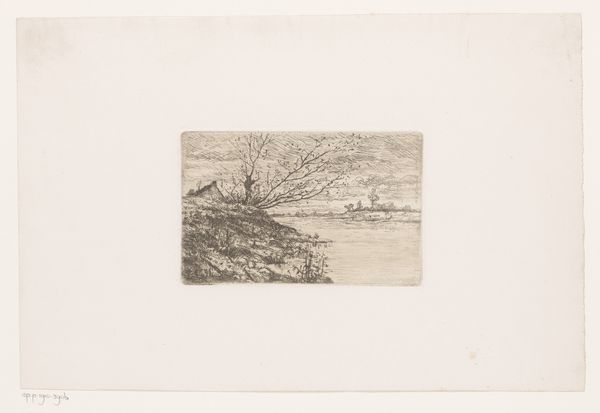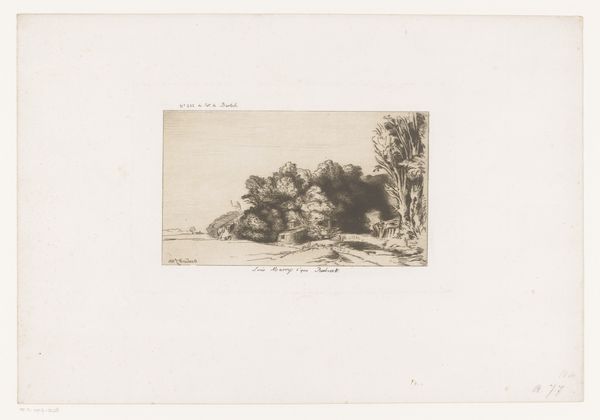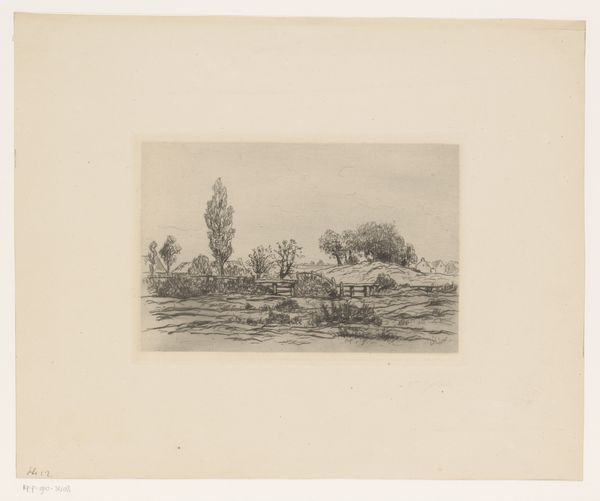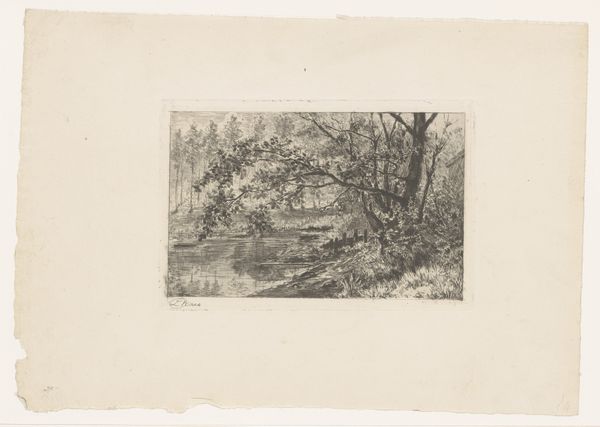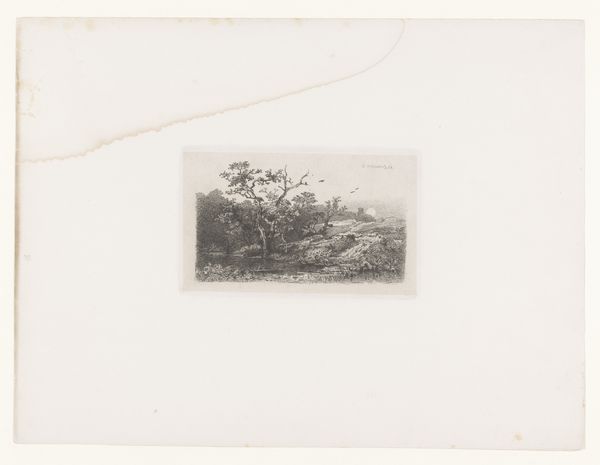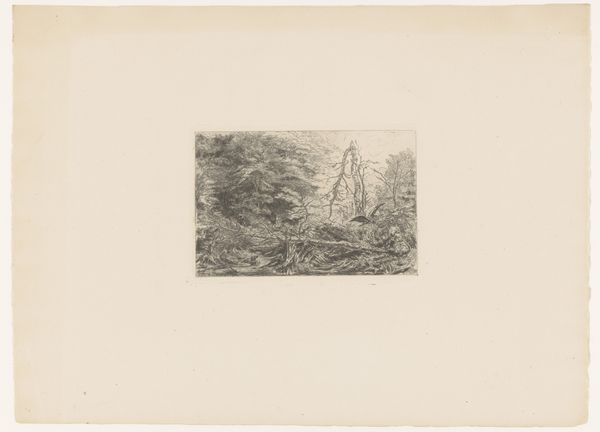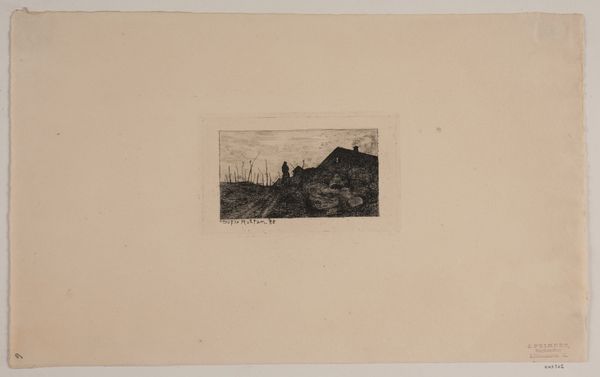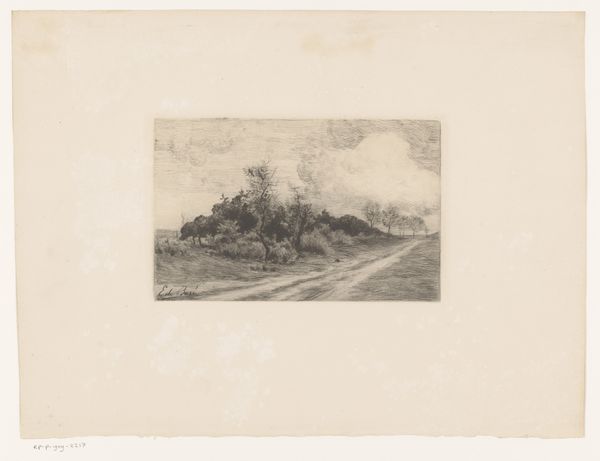
print, etching
#
toned paper
# print
#
etching
#
landscape
#
realism
Dimensions: 3 x 5 7/16 in. (7.62 x 13.81 cm) (plate)9 1/4 x 12 1/4 in. (23.5 x 31.12 cm) (sheet)
Copyright: Public Domain
Editor: So, here we have John Austin Sands Monks’ “Flock of Sheep,” an etching from 1884. It’s a pretty small print, but what strikes me most is the sense of quiet. What do you see in this piece, especially considering its time? Curator: That sense of quiet you mention is interesting because it stands in stark contrast to the period's rapid industrialization. Think about it: 1884. Factories are booming, cities are expanding, labor movements are gaining momentum. This etching, depicting a traditional pastoral scene, feels almost like a resistance to that, doesn't it? A deliberate harking back to an idealized rural past, possibly critiquing the environmental and social costs of progress. Editor: That’s a really compelling point. It’s easy to just see a pretty landscape, but viewing it as a form of resistance… What about the choice of etching? Does that add to the message? Curator: Absolutely. Etching is a process that allows for intricate detail, yet the tonal range is often subtle, creating a sense of intimacy. In this context, it feels almost like a whisper, a gentle reminder of what’s being lost amidst the clamor of the industrial age. Consider who this was marketed towards as well - likely wealthier patrons longing for a lost connection to nature that they were actively destroying with their support of the industrial age. Editor: So, it’s not just a scene of sheep; it’s a statement. The artist is subtly pointing to societal changes and the potential cost. Curator: Precisely. It urges us to consider whose stories are being told, whose voices are being heard, and whose landscapes are being valued in this era of transformation. Editor: I never would have looked at this little print this way without that perspective. Thanks! Curator: And thank you! It's always rewarding to connect art with the broader societal narratives that shaped its creation and reception.
Comments
No comments
Be the first to comment and join the conversation on the ultimate creative platform.
